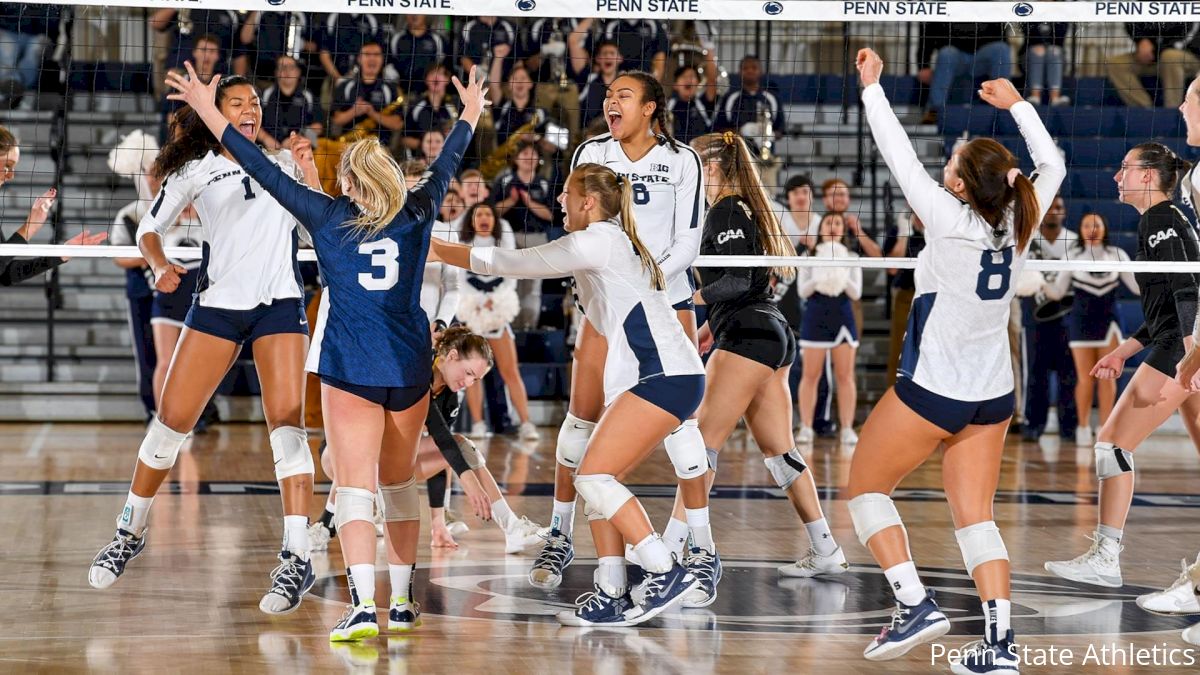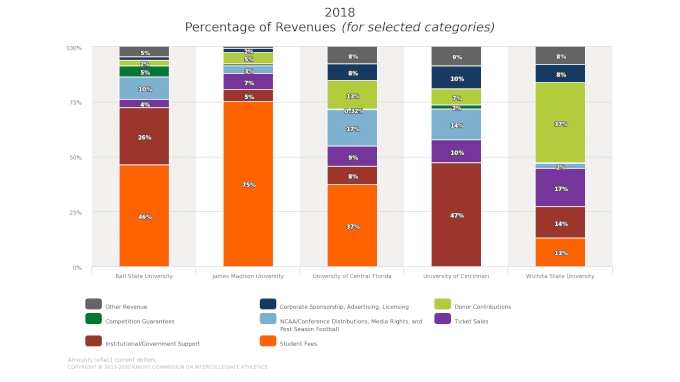There's No Precedent For What Happens To Volleyball If Football Is Canceled
There's No Precedent For What Happens To Volleyball If Football Is Canceled
If college football is canceled, what happens to college athletics? FloSports is diving into the data and stories behind this question.

If the college football season is canceled, what happens to college athletics?
Fans of wrestling, track, softball, or one of the “other” sports may not think this matters much.
But it does matter — a lot.
College athletics is changing dramatically because of the coronavirus pandemic. Schools across the United States and all divisions of the NCAA are facing huge financial losses and institutional challenges, and the fallout is just beginning.
Right now, there are more questions than answers—and that’s OK, I think. After all, global pandemics don’t happen very often! The question about football, though, is ridiculously important for the livelihood of collegiate athletics.
I’m asking this question specifically with smaller (in terms of money) sports in mind: wrestling, track, softball, gymnastics, volleyball, etc. These sports don’t generate the high-revenue figures that football does, so what would the ripple effect be if the biggest revenue driver in college sports suddenly disappeared?
College athletics, even at top Power 5 schools, is heavily subsidized
Before we can even begin to think about football’s cancellation, an important point: The vast, vast majority of athletic departments spend more money than they earn.
Another way to put it: The vast, vast majority of athletic departments are subsidized—either completely, mostly, or partially.
Even as someone who grew up loving college sports, that’s not something I feel like I really knew or understood.
In a 2004-2014 study, the NCAA found in the last year of that timespan “only 24 FBS schools generated more revenue than they spent.”
“There is still a misperception that most schools are generating more money than they spend on college athletics,” said NCAA CFO Kathleen McNeely about the study. “These data show once again that the truth is just the opposite. The overwhelming majority of colleges and universities in the NCAA across all three divisions subsidize part or all of athletics.”
Part of the difficulty of writing about (or thinking about) college athletic departments is they’re all so different. Even placing them in groups is hard. Still, I think it’s a helpful way to think about them, so let’s start with the Power Five (schools in the ACC, Big Ten, Big 12, Pac-12, and SEC).
Here’s a graphic that shows how five of these teams—Auburn, Kansas State, NC State, Ohio State, and Oregon—generate money.

This shows that three sources combined account for 68-91 percent of revenue: conference/media distributions (light blue), ticket sales (purple), and donors (green). For P5 schools, those three revenue sources are king, and without exception the sport that drives those three levers the most is football. (Even a “basketball school” like North Carolina gets more cash from football than men’s basketball, although the expense-to-revenue ratio is better for basketball.)
Outside of the P5, schools address athletics financially in wildly different ways. Let’s look at revenue streams from a few non-P5 schools: Ball State, James Madison, Central Florida, Cincinnati, and Wichita State.

That’s pretty interesting! James Madison funds a huge percentage of their athletics with student fees; Ball State and Central Florida take a big chunk from student fees (orange), too, but not a hefty majority. Wichita State boasts by far the biggest percentage from donors.
But the main point to me is the difference in where the money is coming from when compared to P5 schools. Schools outside the P5 are not raking in huge media distributions, and they don’t generate a big percentage of revenue from ticket sales.
Non-P5 schools do things very differently than P5 schools. It's a basic but important point, because it means schools are going to address the financial losses in different ways if football is canceled, and see very different amounts of losses.
In total revenue in 2017-18, these five non-P5 schools rank from 54th (Central Florida) to 113th (Ball State). The P5 schools in the first graph rank from third (Ohio State) to 50th (Kansas State).
The key takeaways?
- The overwhelming majority of NCAA schools, across all divisions, subsidize part or all of their athletic departments.
- Schools generate revenue in wildly different ways, with P5 schools relying heavily on media distributions, donor bases, and ticket sales.
- Football generates the most revenue of any sport in the Power Five, and it’s not even close.
Schools are already reacting to impending financial losses
Well before a decision has been made on the college football season, schools are already bracing for impact and proactively cutting costs.
Coaches at Iowa State temporarily forfeited portions of their salaries. Wyoming athletic director Tom Burman took a pay cut. Iowa isn’t cutting pay or furloughing through June 30, but Gary Barta, the Athletic Director, expects pay cuts in the 2021 fiscal year. Wisconsin is not seeking waivers for seniors in spring sports to return next year. Old Dominion cut its wrestling program and at least mentioned the coronavirus.
FloWrestling’s Mark Bader caught up with former Old Dominion assistant coach Kevin Beazley to talk about the situation.
At first, Beazley thought he was losing his job because of “budget cuts.” Then he was told the entire program had to go.
The alumni felt if they had known earlier that the program was on the chopping block, they could’ve done more to raise funds.
Here’s the kicker.
“The number that [athletic director] Dr. Selig gave us was kind of outrageous,” Beazley said. “He said that we would need $25 million endowed right now to save the program.”
Old Dominion said they were already thinking about cutting the program before the pandemic, but their statement mentioned the decision became “more clear” with the coronavirus.
Even if their decision wasn’t directly linked to COVID-19, all this immediately raises questions as other programs across the country are being evaluated for financial viability.
The obvious, but important point: Even with only the cancellation of March Madness and spring sports, the financial hit has been hard and is being addressed immediately. But the loss of college football would be an entirely different monster.
When we spoke to head softball coach Donna J. Papa of North Carolina, she told us their program had been asked by the athletic department to cancel a planned trip to Puerto Vallarta, Mexico. This was basically the message: more buses, fewer planes.
“There’s such a domino effect,” Papa said, detailing all the ways she’s adapting to the new NCAA normal.
A lot of this hadn’t even crossed my mind: Recruiting is different, scheduling is different, taking care of current players is different, equipment is different.
Everything is different.
“How can we operate best on bare bones?” Papa asked.
“I feel like I’m going back to the ‘80s with my budget.”
All of this is an open-ended question
Even though the last five weeks have felt like five years, we’re in the early stages of dealing with this pandemic, and colleges are in the same boat.
Athletic departments are already taking significant measures to address the severe financial impact of COVID-19, and we haven’t even gotten to college football yet. Schools across the country are preparing models for a number of circumstances in the fall, but at the end of the day, nobody knows what the impact will be if we lose football.
One anonymous P5 athletic director summed up the bleakest possibility pretty succinctly: “We’re all effed,” he told Sports Illustrated. “There’s no other way to look at this, is there?”
If the financial system of college athletics implodes, these are the questions we’ll face: Do we need college sports? If we do need them, what will we do to save them?
We’ll continue to post articles, videos, interviews, and more about the state of NCAA in the age of the coronavirus in the coming weeks and months, because right now the fluidity of the situation demands it.
This isn’t the tip of the iceberg. This is a new planet.
If you have information or a story you want to share about college athletics in the time of coronavirus, especially from the perspective of non-revenue sports, contact Hunter Sharpless at hunter.sharpless@flosports.tv.